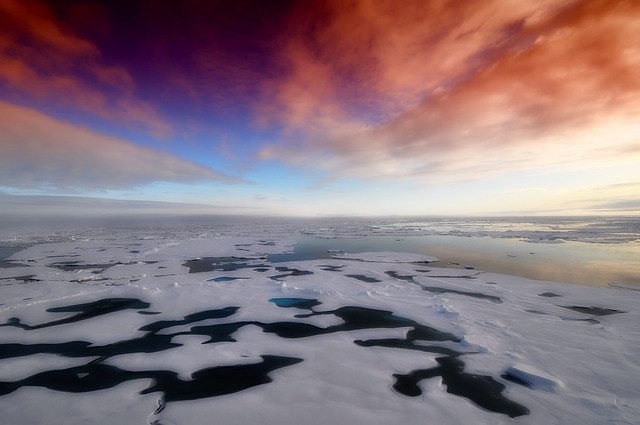Scientists believe that that tiny planktons found in marine ecosystems are crucial in changing the planet's climate. These tiny sea creatures are apparently responsible for creating cloud formations in the sky where they block sunlight that also reduces the light that reflects on the oceans' surfaces.
When cloud droplets are collected every summer in the Southern Ocean that surrounds Antarctica, researchers believe that this process is caused by these sea micro organisms that are dwelling in their ocean habitat.
When there is more exposure to sunlight during the summer months, marine phytoplankton thrive and multiply more, where they release microscopic particles that are called aerosols up into the atmosphere. Researchers have found evidence that this aerosol process doubles the concentration of water droplets found in the air above the oceans.
When there's this amount of concentration of water, clouds tend to become more brighter. When clouds are brighter, the amount of sunlight that is reflected bounce back to space that cools down the planet's temperatures.
According to Daniel McCoy from the University of Washington, during the summertime, the clouds over the Southern Ocean produce more sunlight as a reflection without these plankton blooms. This double concentration of water droplets in the clouds is similar to the result of a biologically dead ocean.
Climatologists are trying to figure out the effects of cloud formations with Earth's overall temperature and weather. Some scientists have already put out theories regarding how plankton and microorganisms play a role in the cooling of the planet, however there is still no evidence of this effect until this new study.
Researchers have done an analysis of data collected from NASA's Moderate Resolution Imaging Spectroradiometer (MODIS) instrument, that was launched in lower Earth orbit in 1999 to study and acquire measurements of water droplets in the atmosphere.
Water droplets in the atmosphere and cloud formations apparently possess different sizes, anywhere from 1/100 of an inch to one centimeter in diameter. Researchers then obtained satellite data from Southern Ocean regions that are not covered with sea ice.
Satellite data revealed that the water droplets are smaller in size during summer season as opposed to other months of the year. Scientists were rather surprised by this finding since there's less ocean activity during warmer months, where less moisture is sent into the air.
With this new finding, researchers were compelled to conduct an investigation of marine life as a factor in making clouds brighter. This new study is published in the journal, Science Advances.



























